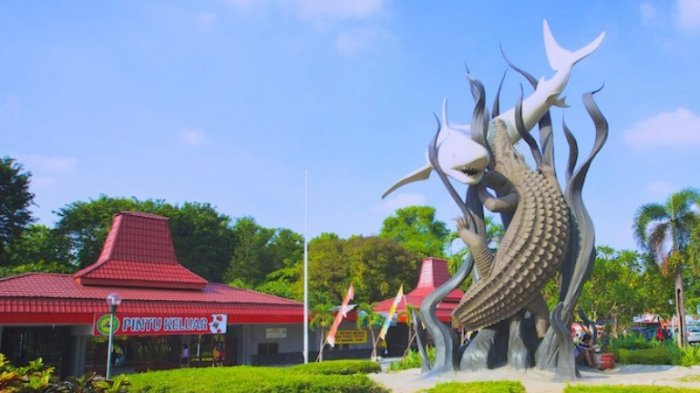Tourism governance design in colonial-era Surabaya
Around 1908 a negotiation emerged between the government represented by Governor-General Van Heutsz (1904-1909) and several representatives of the private sector working in the tourism sector. The purpose of the meeting was to formulate an association (vereeniging) engaged in tourism. After a long period of preparation, a tourism association in the Netherlands Indies was formed under the name Vereeneging Toeristen Verkeer (VTV), which was later inaugurated on April 13, 1908. In the same year, VTV had arranged a regional management board such as the VTV management board in Surabaya, led by Surabaya. by A. E Dinger, J. De Greve, and HJ. De Bruijn (Sunjayadi, 2007).
Seeing the potential development of tourism,Surabaya Government wants to develop and provide new facilities for the city. The aim is to increase the number of visits and extend the period of tourist arrivals in Surabaya. This development is under the control of the Public Works Agency (Wethouder voor Publieke Werken), which deals with the issue of building public facilities. VTV also made the making of promotional books for tourists with the theme of tourist attractions in Surabaya in collaboration with the city government. Among the tourist attractions in Surabaya that are often promoted are the Kalimas River, Surabaya Harbor, Kampung Arab, Tomb of Sunan Ampel, Chinatown, Zoo, and Annual Night Market (Jaarmakt).
Tourist Perceptions about Surabaya
Around 1914 Cabaton, a French health researcher, visited Surabaya. Cabaton describes the people of Surabaya as being very active in buying and selling activities, and the native Javanese in Surabaya is also dragged into this activity, especially at the port. However, Surabaya has a less friendly climate, inadequate drinking water supply and quality, and the threat of cholera (Cabaton, 1920).
A rather critical perception was expressed by a Dutch tourist named HW. Ponder circa the 1920s. Ponder told me about Surabaya’s significant settlements, especially in European residential areas. Different conditions are located in local settlements where there are many narrow streets or alleys that Ponder considers to be rows of dolls’ houses. According to him, although transportation facilities are very modern, the condition of the streets is very irregular because of the many pedestrians passing by and very dangerous (Ponder, 1990).
Other researchers, such as De Graaf and Gravin de Réthy visited Ampel. They saw the old area around the Kalimas River (Kembang Jepun, Sasak, Panggung, Cendah) as well as several other areas such as Bubutan, Plampitan, Peneleh, and Maspati areas. After leaving Surabaya, De Graaf and Gravin continued their tour to Bali by KPM via the Tanjung Perak port (Soerabaiasch-handelsblaad, January 21, 1929). An American researcher named Arthur Stuart Walcott also revealed his experience when traveling to Surabaya. Walcott was very impressed with the hectic loading and unloading activities ranging from Surabaya Harbor to the Red Bridge along the Kalimas River. Walcott then stayed at the Simpang Hotel with laundry facilities, which he said were very cheap by 4 cents for a piece of clothing. According to Walcott, tourists who come to Surabaya will realize that this city is only a collection of European villages and buildings, military sites, barracks and ports. Surabaya is only suitable for a stopover to other places that are more interesting (Walcott, 1914).
The existence of tour packages with the aim of places of worship and historic were provided in the 1930s. A total of 60 excursion tourists take a city tour to Hok An Kiong Temple on Cokelat Street, Boen Bio Temple on Kapasan Street, Hong Tiek Hian on Dukuh Street, and the Sunan Ampel Mosque (De Indische Courant, Vol I, April 15) 1935). The birth of social and religious organizations in the early 20th century made its color for tourism in Surabaya. The pilgrimage tour has been carried out by members of the NU organization, aside from the historical factor about Sunan Ampel, and there is also an ideological-religious factor which advocates the pilgrimage following religious rituals in it. This pilgrimage tour is a series of events in NU congress (1928 and 1940) held in Surabaya. Several other members of the organization, such as the mothers’ association from Lawang made a pilgrimage to the tomb of Dr. Soetomo, who is on Bubutan Street, Surabaya (Tempo, December 6, 1941).
Conclusion
Based on the research results, it can be concluded that Surabaya, apart from being a tourist sending area, is also a tourist destination. It can be seen from a variety of attractions that can attract tourists to visit there. Until now, the position of Surabaya is still the same, namely, as a place to stay for a while. Besides, the perception of tourists is essential to see that Surabaya has more value. At the same time, the government also has homework that must be resolved immediately, such as traffic jams, garbage, environmental conditions, and so on.
Author: M. Nilzam Aly
Details of the research available at
https://produccioncientificaluz.org/index.php/utopia/article/view/32118





